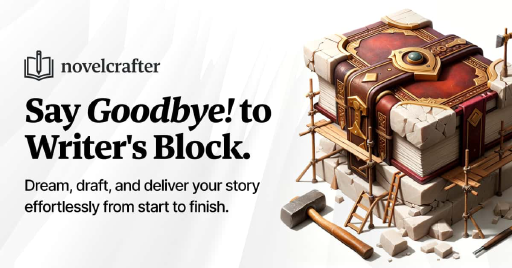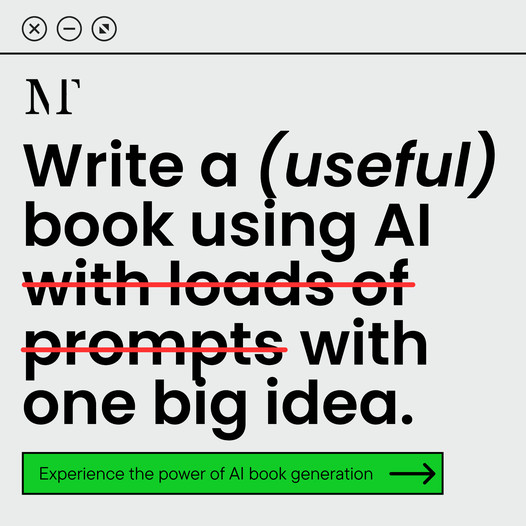The Art of Planning Your Novel
Getting your ducks in a row before diving into your novel makes a world of difference, setting the stage for a smoother, more enjoyable writing endeavor.
Why Bother Planning?
It’s like having a map before a road trip. Planning helps you stay on course, understanding where your story’s headed. Jot down your main plot points, themes, and character arcs so your ideas don’t stray off course. With a solid plan, you’ll dodge writer’s block and avoid tangled plots.
| What Planning Does for You | Why It Matters |
|---|---|
| Solid Structure | Keeps your tale neat and tidy. |
| Frees Up Creativity | A roadmap gives you wiggle room to get creative. |
| Saves Time | Cuts back on hair-pulling revisions and plot surgeries later. |
Why Structure Matters in Your Book
Think of structure as the GPS for your writing journey. It helps you hit all the right storytelling notes, making for a read that’s both gripping and fluid.
- Crystal Clear: A good structure makes it a breeze for both you and your readers to stick with the story.
- Keeps Readers Hooked: When everything clicks, your plot becomes an unputdownable page-turner.
- Speeds Things Up: A guideline makes the writing flow like a well-oiled machine.
- Less Chaos: Tackling manageable chapters makes the novel feel less like climbing Everest.
Looking for tips to bring order to your writing chaos? Check out our article on upping your writing game. Embrace planning as your new writing sidekick, and watch your novel shine!
Preparing for Your Writing Journey
Understanding Your Story
Before you start hammering out words or tapping away on your keyboard, it’s super important to get a grip on what your story’s all about. You gotta define the main theme, pinpoint your conflict, and think about where it’s all going down. Basically, what’s the message or vibe you’re trying to get across? This kind of focus sets the stage for everything you write and keeps you from wandering off track.
Here’s some stuff to think about as you map out your story:
| Key Questions | Why They Matter |
|---|---|
| What’s my story’s main theme? | To nail down your core message. |
| Who are my main folks in the story? | To figure out who keeps things moving. |
| What’s the big conflict here? | To stir up some drama and keep ‘em hooked. |
| Where’s all of this happening? | To set the scene and tone. |
Reading blog posts on things like crafting lifelike characters can definitely help you out. If your characters feel real, they’ll react naturally to conflicts. Check out how to create realistic characters for a deeper look.
Setting Clear Goals and Objectives
Goals and objectives are like your GPS for the writing path. It might mean having a word goal per day, deadlines to wrap up chapters, or an end date for your whole draft. Goals keep you going and help you stay organized. They’re like your personal cheerleader and coach combined.
Peep these goal examples:
| Goal Type | Example |
|---|---|
| Word Count Target | Knock out 1,000 words a day. |
| Chapter Due Dates | Finish the first chapter by [a certain date]. |
| Manuscript Timeline | First draft done by [your personal goal date]. |
Nailing down a regular writing schedule can really make that writing habit stick. Articles like how to develop a writing habit or how to write faster could give you some cool hacks to get into a groove.
 What Poetry Feels Like
What Poetry Feels LikeOnce you’ve got your story figured out and goals set, you’re gonna be ready to rock the planning scene. Take a breather now and then to see how your goals are faring; tweak them to fit where you’re at. Keep moving forward, adjusting as you need, and your writing adventure will be one for the books. 🔥
Essential Steps in Planning Your Book
Planning your book ain’t just slapping words on paper. It’s like building a house; you need a solid game plan to stand tall. This section peels back the layers on cooking up captivating characters, sketching out your plot, and juggling a timeline that makes sense.
Developing Your Characters
No one wants cardboard cutouts for characters. We want the folks who leap off the page, not just because they’ve got witty one-liners, but because we completely get ’em. Start by nailing down who your characters truly are—what keeps them up at night, what lights a fire under their feet. You can use character profiles to keep a tab on their backstories, what they’re good at, their Achilles heel, and what they’re gunning for.
| Character Bit | What’s It About |
|---|---|
| Name | Something catchy they’ll be remembered by. |
| Age | Where are they in the grand scheme of life? |
| Background | The baggage that made ’em. |
| Motivation | What’s got them ticking in your story? |
| Conflict | Whatcha throwing at ‘em to keep the story spicy? |
Want to dig deeper? Swing over to our piece on how to create realistic characters.
Outlining Your Plot
You wouldn’t drive a car blindfolded, right? Plotting your story is pretty much about taking those blindfolds off, so you know exactly where you’re headed. Kick off with your main idea, then flesh it out with a blueprint for major happenings, spats, and how it all wraps up. Whether you’re a fan of the good ol’ three-act structure or the Snowflake Method, be sure to map it out clearly.
| Plot Bit | What’s It About |
|---|---|
| Main Idea | What’s the big thing your story’s wrestling with? |
| Key Events | Jot down the major curveballs and game-changers. |
| Climax | The oh-my-gosh moment that flips everything on its head. |
| Resolution | How’s it all gonna end? Let’s hope it’s satisfying! |
If outlining sounds like your jam, take a peek at our guide on how to outline a story.
Creating a Timeline
Let’s face it: chaos ain’t great for storytelling. Naming and timing your story’s milestones helps ensure stuff makes sense and hits hard. Pin down when things go down, stacking them up logically. This is golden especially if there are twists and turns all over the place.
| Timeline Bit | What’s It About |
|---|---|
| Event | What’s happening when? |
| Sequence | Serving ’em in the right order. |
| Duration | How long’s everything dragging out? |
| Characters Involved | Who are the usual suspects involved in these scenes? |
Having a snazzy visual tool for your timeline can pull everything together. You can mix this in with character arcs and plot beats for full-on clarity. For more hints and exercises for ironing out your plans, check out our spot on creative writing exercises.
Dive into these steps—fleshing out characters, outlining the plot, and crafting a timeline—and you’ll have a rock-solid backbone for your book, making the whole writing gig way more fun.
Organizing Your Thoughts
Getting your book together means turning that whirlwind of ideas into something that makes sense. With the right tools and know-how, you can simplify the writing grind and see where you’re really headed.
Tools for Planning Your Book
Let’s talk about some gadgets and gizmos that’ll give you a hand with your book plans. Check these out:
| Tool Type | Description | Examples |
|---|---|---|
| Digital Software | Apps that help writers map out and tidy up thoughts. | Scrivener, Evernote, Microsoft Word |
| Graphic Organizers | Helpful visuals for your plot or characters. | Mind maps, storyboards |
| Note-taking Apps | Quick ways to catch those sudden bursts of genius. | Google Keep, Notion |
These babies can streamline how you arrange your ideas. Picking the right one is like having a clear path through all the chaos of plots and characters. Swing by and check out our piece on best resources for writers for more nifty tips.
Techniques for Visualizing Your Ideas
Drawing your ideas can really make them pop. Here’s how to make it happen:
- Mind Mapping: This is like a visual idea tree for your story bits: characters, settings, and big moments. It helps you spot how everything links together.
- Storyboarding: Think of it as creating a comic strip for your book. Sketch out scenes to see how the story moves and where it needs a tweak.
- Index Cards: Jot down scenes or thoughts on cards. Spread them out and shuffle ’em around to find your plot’s best fit.
| Visualization Technique | Benefits |
|---|---|
| Mind Mapping | Spot relationships from a bird’s-eye view. |
| Storyboarding | See your pacing and flow through sketches. |
| Index Cards | Shuffle scenes around like a playlist. |
Working these tricks into your routine can really beef up your storytelling prep. If you’re hankering for more ideas, dig into our piece on how to outline a story.
Mixing up both gadgets and drawing techniques lets you firm up your novel’s framework. With everything lined up, you’ll have a smoother ride focusing on the art of the story itself.
Bringing Your Plan to Life
You’re about to translate that big idea of yours into a manuscript, and using some nifty writing strategies can seriously jazz up your efficiency and imagination. Keeping things flexible while you write might just be your secret weapon against any bumps or surprise gems along the way.
Writing Strategies and Tips
To really nail this transformation from plan to paper, try out these methods:
-
Set a Daily Word Count Goal: Nail down a word goal for each day. It’s a bit like having a treadmill for your mind, keeping things steady and manageable. Feel free to tweak this based on how much free time you got or how fast your fingers fly.
-
Create a Writing Routine: Find a sweet spot in your day dedicated to writing. This ritual will boost creativity and order in your work life. Check out our piece on how to develop a writing habit for extra pointers.
-
Use Writing Prompts: Stuck? Tap into writing prompts—they’re like little idea jump-starters. Handy for spicing up dialogue or adding depth to backgrounds. Peek at our easy writing prompts if you need a spark.
-
Break Down Tasks: Turn your writing mission into bite-sized bits. Could be chapters, scenes, or just character moods. Using a checklist to see accomplishments pile up is a nice touch.
-
Stay Organized: Whether it’s digital doodads or good ol’ notebooks, keep your notes on who’s who, what’s what, and where they’re at all in one tidy place. Helps keep the confusion at bay. Swing by our story organizing guide how to outline a story for slick tips on this front.
| Strategy | Description |
|---|---|
| Daily Word Count Goal | Aim for daily word milestones. |
| Writing Routine | Regular jotting times boost flow. |
| Writing Prompts | Prompts to jumpstart brainwaves. |
| Break Down Tasks | Split into snackable writing tasks. |
| Stay Organized | Centralize notes and ideas. |
Staying Flexible and Adaptable
Having a game plan is great, but being able to roll with the punches is just as key. Here’s how to stay light on your writing feet:
-
Embrace Change: Your story or characters might take turns you didn’t plan for. Roll with it—a plot twist here or character growth there can make your story all the richer.
-
Revise Your Plan: If parts of your story aren’t clicking, don’t sweat changing them up. Shift your goals and deadlines as it makes sense.
-
Seek Feedback: Share your pages with buddies or writing circles to glean different perspectives. Constructive feedback can shape your tale nicely. Peek at our article on tips for editing your book for more.
-
Balance Structure with Creativity: Sure, sticking to an outline is useful—but if inspiration grabs you, follow it. Some of the coolest bits can come from a moment of “aha!”
-
Practice Self-Care: Let’s be real, writing can work your brain hard. Remember to rest, stay mindful, and take care of yourself to dodge that dreaded burnout.
By flexing and taking things a bit chill during your writing, you’ll find the story you share turns out more genuine and captivating. Trust the process and let your narrative grow naturally to suit you.
Refining Your Plan
After you dream up your book, it’s time to give it a good polish. This step boosts your manuscript’s vibe, making sure it’s ready to spark some serious reader joy.
Seeking Feedback and Revisions
Getting other folks’ perspectives on your writing can seriously level up your skills. Chat with beta readers, join writing groups, or find critique buddies—they’ll throw you some golden feedback. Be sure to hone in on their thoughts about how your plot shapes up, whether your characters are real enough to jump off the page, and if the story keeps a good beat. Crafting some pointed questions for your readers can help keep their feedback clear and useful.
| Feedback Source | Good Stuff | Stuff to Think About |
|---|---|---|
| Beta Readers | Fresh eyes | Experience varies |
| Writing Groups | Community vibes | Time eater |
| Professional Editors | Pro insights | Can cost a chunk |
Take in the feedback with an open mind, but make sure your gut has a say. Tuning your story with others’ ideas can smooth out the story flow and allow your characters to shine. For more tips, peek at our article on editing your book like a pro.
Finalizing Your Book Structure
When you’ve wrapped up your revisions, it’s time to set your book’s bones. Double-check that your outline vibes with your story’s essence. Make sure your pacing grooves with the story arc and the characters are expanding in the way you’d envisioned.
Keep these elements in mind during this phase:
- Plot Structure: Your start, middle, and finish should groove together seamlessly.
- Character Arcs: Characters should grow in a way that feels real and earned as the tale unfolds.
- Theme Consistency: Weave the themes in subtly without laying it on too thick.
Organize your thoughts with tools like index cards or mind maps. Seeing the big picture helps you make those final tweaks. Need a hand with outlining? Check out our guide on making a killer story outline.
Slickening your plan by welcoming feedback and revisions doesn’t just enhance your manuscript; it stretches your storytelling skills. With a keen eye and a bit of elbow grease, you’ll be crafting a draft that’s ready to dazzle.


 Grab my poetry book, 'we're all just wanderers in the end' Here
Grab my poetry book, 'we're all just wanderers in the end' Here AD: Your Book Finally Written...
AD: Your Book Finally Written...